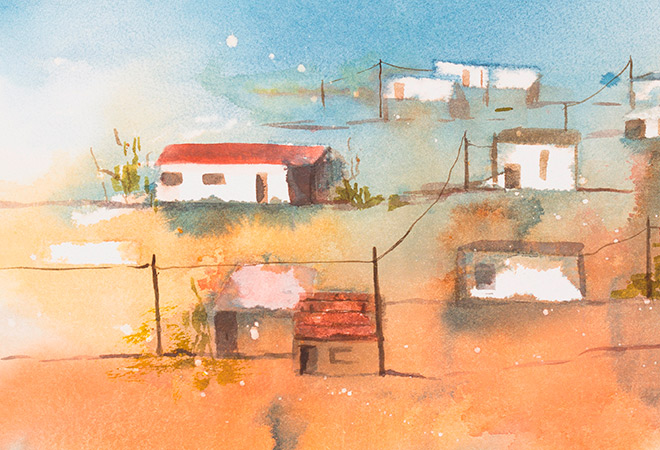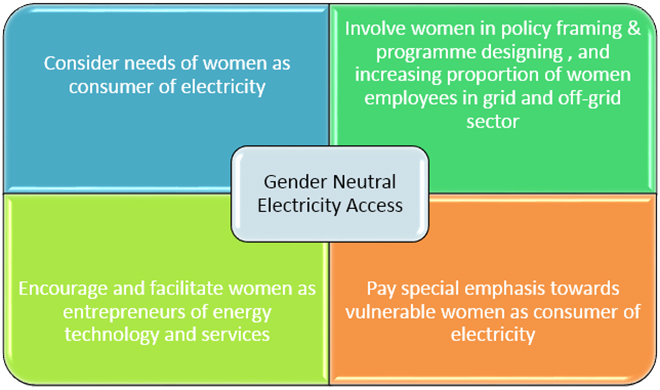
Gender neutral ways of ensuring universal electricity access in Sub-Saharan Africa
Incorporating gender focus in electrification programmes is important as women and men have different energy needs.
In Sub-Saharan Africa (SSA), only 43% of the population has access to electricity, which leaves approximately 600 million people without it. [1] Despite the Sustainable Development Goal (SDG) 7 — which ensures universal access to affordable, reliable and modern energy services by 2030 — the rate of increase in electricity access in SSA has been much slower in comparison to the rest of the developing world. If the 2030 goals are to be met, then this would involve the mammoth task of reaching 57% of the population and providing them clean, affordable power.
Extending grid electrification involves massive investments. Like any other developing countries, the solution in SSA lies in combining grid and off grid sources. Adding renewable based electrification solutions will help achieve the SDG 7 target. However, while progress with electricity access is one factor, gender mainstreaming is also to be considered for ensuring sustained use of off-grid solutions and equal access to both men and women.
The role of gender in energy access is of two-fold: it impacts both supply and consumption. Electricity has an indirect but strong impact on women. A study conducted during the mass rollout of electricity in South Africa found that rural electrification raised female employment in electrified communities by 9.5%.[2] Studies have revealed that household electrification increased school attendance, especially amongst teenage women. In rural health centres, access to electricity ensures much safer child deliveries. Moreover, women are more affected by the indoor air pollution caused by fuel based lighting devices (such as kerosene lamps) as they spend the most time inside the house. Thus, given all these factors, this article suggests few ways to equalise gender inequality in relationship to electricity consumption and supply.
Incorporating the gender focus in electrification programmes is important as women and men have different energy needs. [3] For example, women may prefer to place illumination devices in kitchen, while men may prefer it in the living room to facilitate social gatherings. These issues are to be addressed especially if there are a limited number of light points and fans (especially in case of Solar Home Systems and off-grid solar power plants). In general, women are less involved in decision making than men although an ESMAP report confirms women having higher-than-expected decision making power for off-grid lighting purchases. While analysing the case of Mpanta solar mini-grids in rural northern Zambia, Johnson et al. conclude that the benefits derived from technology and service were not evenly distributed between men and women due to broader socio-cultural practices and norms.[4] Thus, it is important that women are included in the decision making process of purchasing and placing lighting devices. Towards this effort, in Kenya, the Last Mile Connectivity Project (ONEC) allotted $350,000 to target the differentiated gender needs in the rural energy sector.
It is important that women are included in the decision making process of purchasing and placing lighting devices.
Furthermore, a special emphasis has to be placed on vulnerable and marginalised women. For example, in Mauritius, the long term energy strategy proposes staggering payments of electricity charges to vulnerable women.[5] This could be an effective solution.

A study based in five African countries (Ethiopia, Ghana, Kenya, Tanzania, and Zambia) indicates that electricity connections for women-headed businesses are generally delayed when compared to their male counterparts.[6] Due to this, more women-operated firms give bribes to secure electrical connections. Such gender disparity in Africa may have broad implications, as African women make up 50% of the self-employed workforce. This gender disparity has to be addressed by engaging more women as grassroots workers in the electrification programmes and ensuring connections to all within a prescribed time limit. However, these initiatives must be addressed at policy and programme designing level.
Increasing the representation of women is crucial for developing and designing electricity access programmes in gender neutral ways. However, these are long term plans wherein more and more women are to be trained to develop expertise in the energy sector. However, there are already examples of such efforts: for instance, in Zimbabwe, the Ministry of Energy and Power Development identifies a gender focal point to coordinate the implementation of gender mainstreaming in the energy sector. Similarly, in Rwanda, the government encourages women’s participation in the planning, design and execution of energy programmes.
The fourth aspect is to empower women by engaging them in the supply chain of energy technology and services as entrepreneurs. Africa has already demonstrated such models — Solar Sisters is an example. Solar Sisters encourage women to take up clean energy businesses. Lighting Africa is another similar venture with the same goal. To further facilitate these initiatives, more liberal loan conditions towards vulnerable women will certainly help.
More points that could work towards incorporating gender mainstreaming in electricity access initiatives for SSA countries are presented below.
Figure 1: Key points towards incorporating gender mainstreaming in electricity access initiatives in SSA

SSA countries have demonstrated gender mainstreaming components in electricity access initiatives at various levels, although this has thus far, been presented in a scattered manner. Based on the best practices from various countries in SSA, compiled guidelines with a list of indicators to incorporate gender mainstreaming component may be developed for all the SSA countries. These guidelines will be helpful for building and measuring gender mainstreaming for country level initiatives concerning electricity access, especially for countries that are lagging behind in this respect. Such initiatives may be channeled through regional level networks and institutions such as Power Africa’s Women in African Power Network and ECOWAS Network on Gender Mainstreaming in Energy Access (ECREEE).













